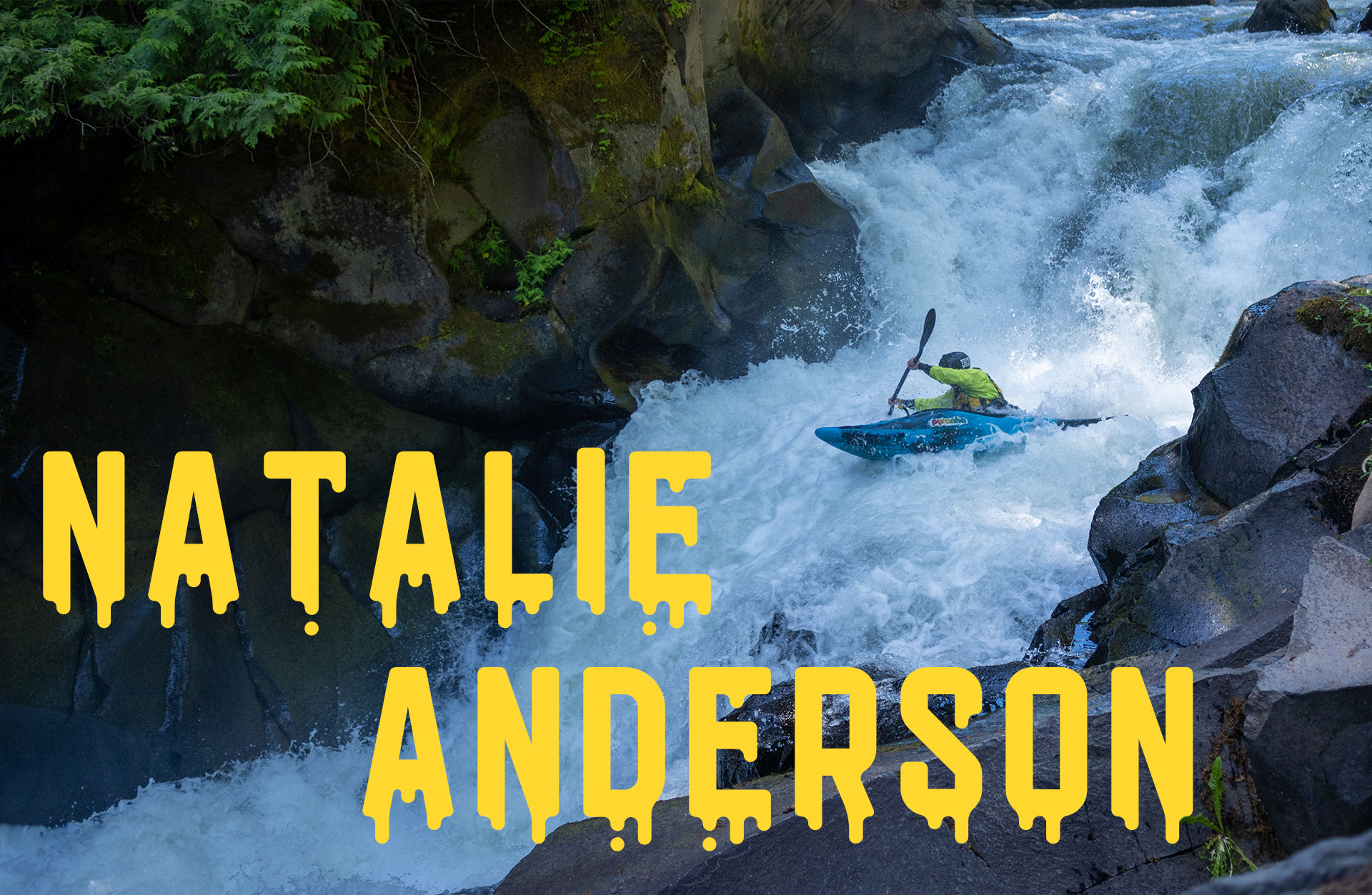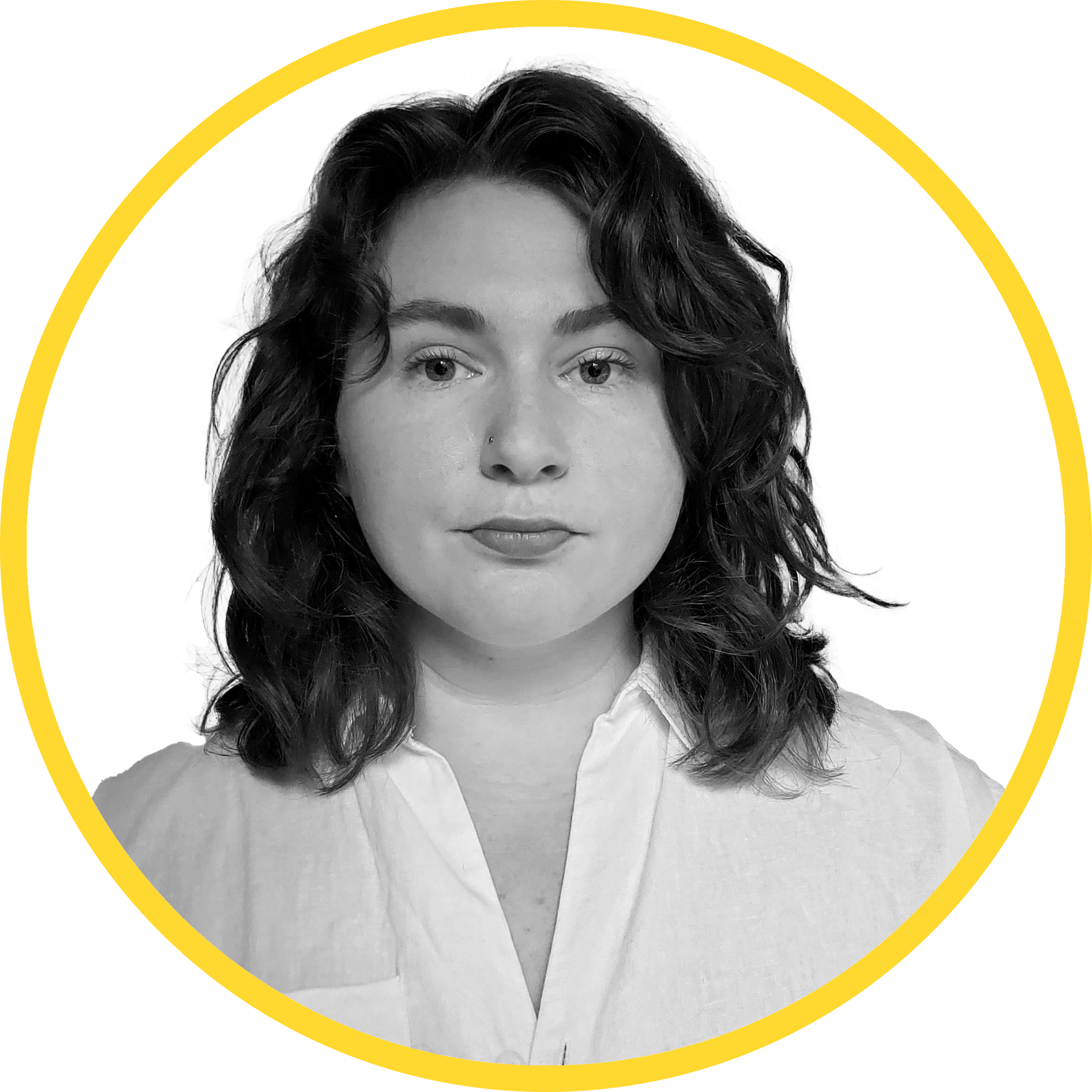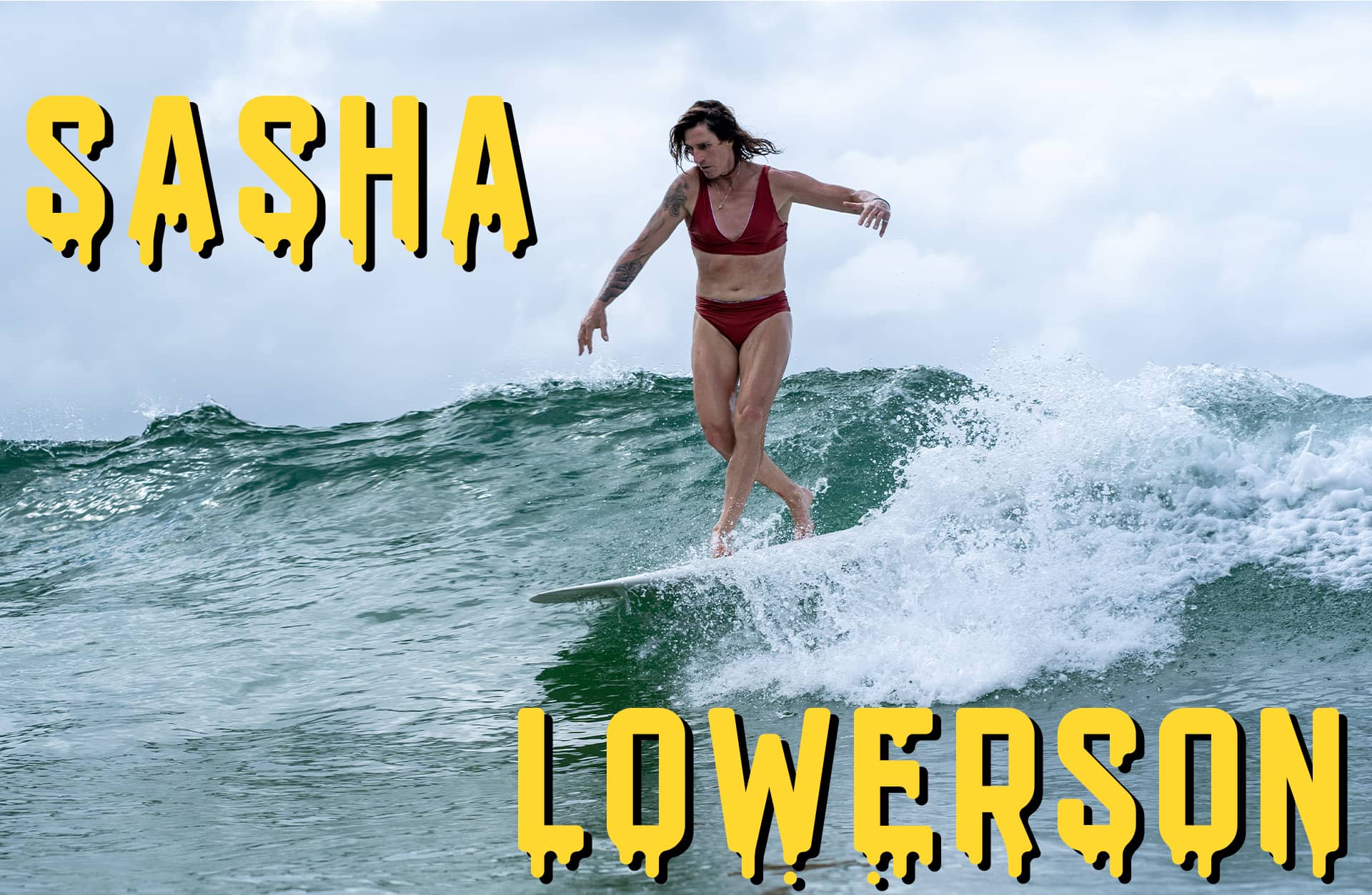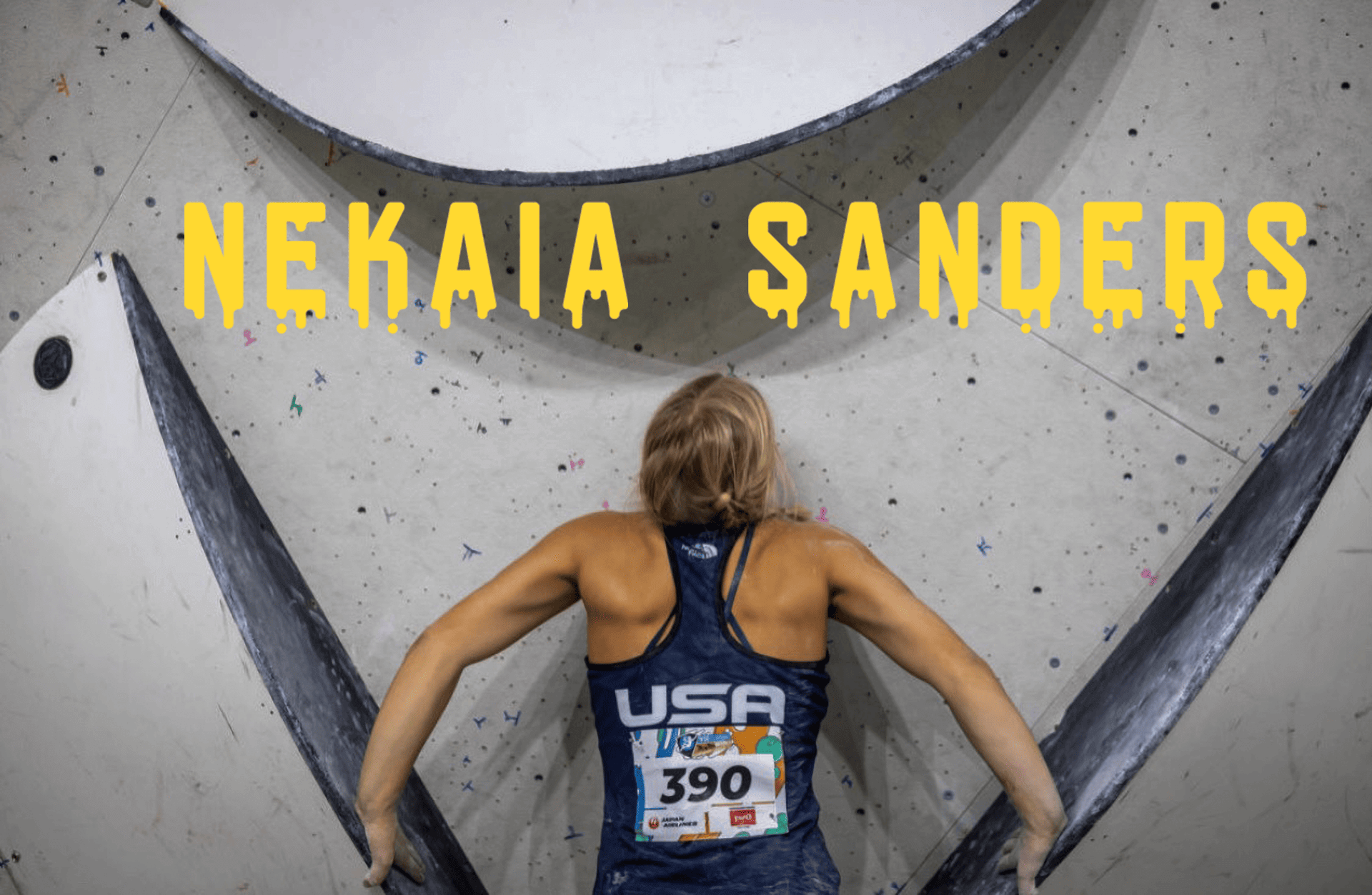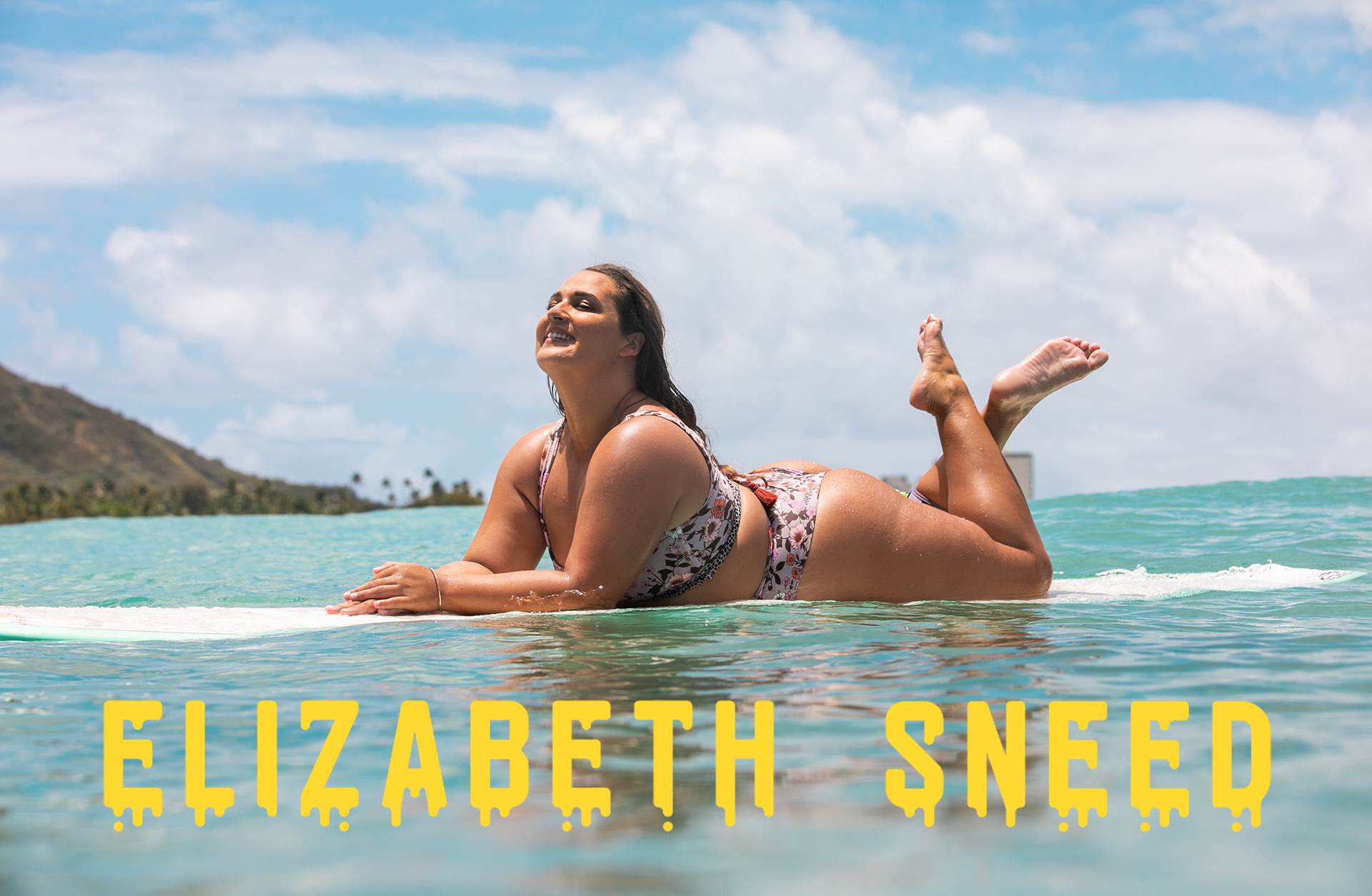MISC // 01 JUNE 2022
CHOOSING YOUR LINE
“I’m pretty good and quick at making decisions, but at the same time, [I’m] kind of worried about what it all means, where is it going? And that can kind of keep [me] from fully immersing [myself] in the moment. I’m sure you can think of many analogies about running rivers,” laughed mother of two, champion kayaker, and Doctor of fluvial geomorphology, Natalie Anderson.
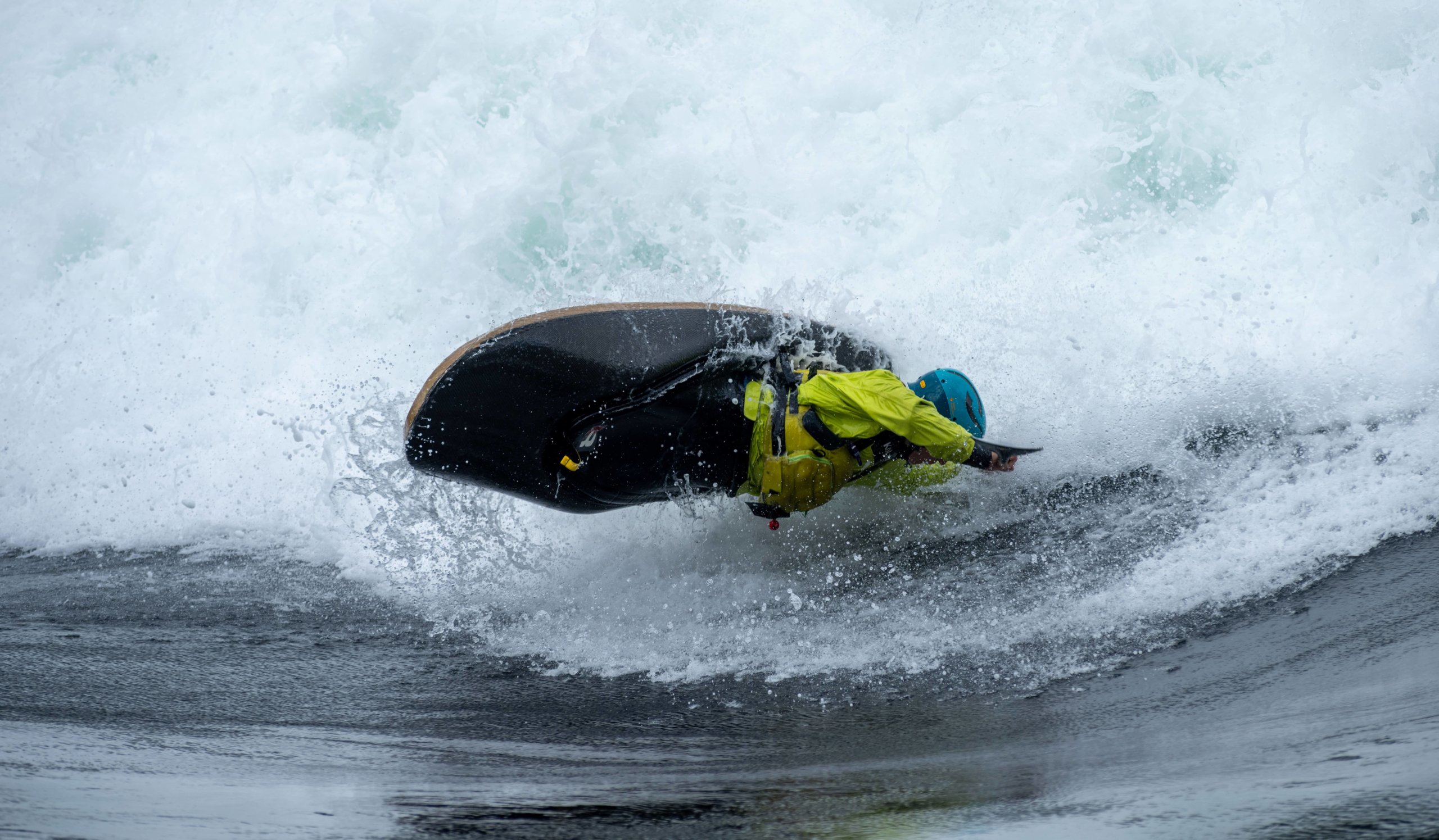
“Your life is a river rapid, and you’re making the best decision that you can in a moment. But there are different waves and features, and they might throw you offline and you could really struggle hard to get back to a certain point in a different spot in the river. Or you could look ahead and be like, okay, I’m here now. Where’s my next path going forward from here? I feel like it was just in the last two years, after my second kid, where I’ve really started to settle in more, lean into myself. Really settle in that route in a way [where I] can reach further but not really think about reaching further. It’s a hard thing to think about, but there’s always choices.”
Sat in a bucket on a raft, Anderson was on the river at an early age. Her father, who’d spent several years as an exploratory rafter, continued to share his passion with his family, taking the whole crew on long overnight trips during their summers. “I would say that that’s one of the defining activities of my childhood,” said Anderson. “I learned how to read water and that doesn’t really go away. Those early exposures stick with you.”
Along with learning her way around water, Anderson’s summer family trips instilled a sense of self-confidence in difficult situations. As Anderson explained, “Sometimes you just gotta get up and go and do it. We did a lot of trips with my family where it wasn’t totally planned out. We didn’t necessarily have all the gear. There was a hiking trip where my sister was in her black patent leather shoes, [I have] a little picture of her where she’s got a dress on.”
Anderson laughed as she recalled another story from when she was eleven. Her family decided to go hiking in the high Sierras during the early summer. Not anticipating the several inches of snow still on the ground, it wasn’t long before everyone’s shoes and socks were soaked through, but the family was unfazed. Using some plastic bags, Anderson’s father crafted an impromptu solution to keep the family’s toes nice and dry.
“[Grab your] change of socks, put dry socks on, put the plastic bags around your sock, and then put your shoes on. Yeah, it keeps your socks dry and I think I actually used it last year, that little trick,” she smiled. “But being able to just get started and having the confidence to know how to get yourself through stuff, I think was a valuable lesson from all those trips.”
Even with so many years spent on the river, kayaking didn’t become a part of Anderson’s life until college. While studying for her undergrad in Geology, Anderson attended kayaking lessons hosted by her school. “I figured that I’d probably have fun and also I didn’t have to pay for it. There was a pool session and they had a student who would teach people to roll twice a week. I just started going regularly twice a week and that’s how I started kayaking.”
It was at these weekly sessions that Anderson met her now husband, Leif Anderson. A passionate kayaker since childhood, he helped Anderson immerse herself into the sport.
Faced with post-grad indecision, Anderson moved with Leif to Fort Collins, Colorado, finding a job as he started graduate school. However, after a year of working in consulting, Anderson needed something different, so she applied to graduate school. “I just ended up looking online and saw that there was a woman who studies rivers. I was like, oh, well, I guess it’s in the geology department. And that’s how I ended up studying fluvial geomorphology because she’s a fluvial geomorphologist, [a person who studies the interactions between the physical shapes of rivers, their water and sediment transport processes, and the landforms they create]. I was like, yeah, this sounds like a good fit for me. I just applied to work with her, and that’s it,” laughed Anderson. “There was no forethought of ‘I’m going to live my life in a certain way’, you kind of follow what seems like the natural next decision for yourself.”
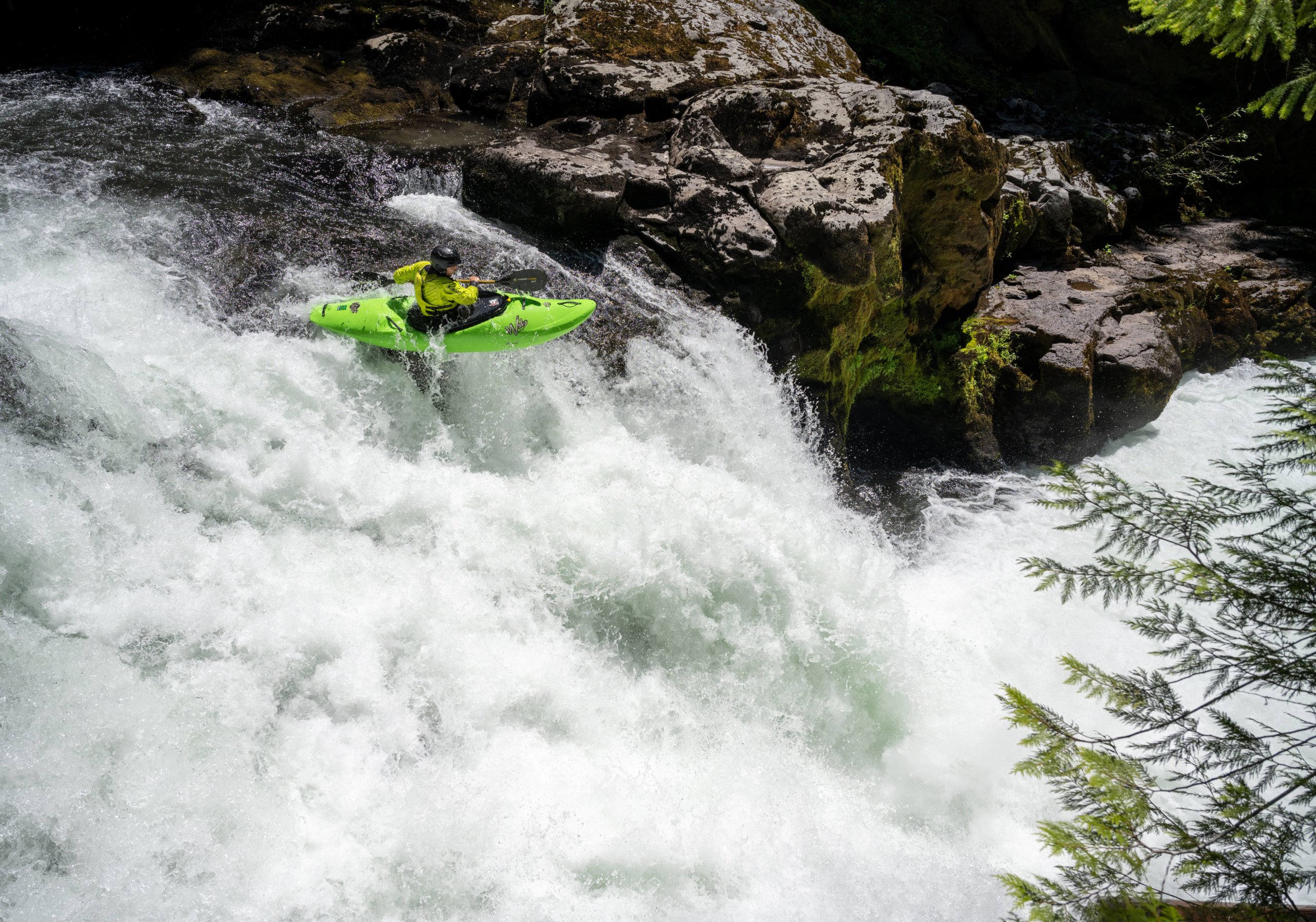
During this time, Anderson and her husband continued to kayak, and what started out as rolling in a pool soon turned into drops off Melako, a 90ft waterfall in Oregon, trips down class-V rapids on Uganda’s White Nile, and the third female descent of the Stikine River, a trip that has about a 50% success rate. These paddles, along with top placements at several high-profile competitions, including Little White Salmon Creek Race and the North Fork Championship, have established Anderson as one of the top paddlers in the world.
For this year’s competitions, Anderson’s preparation has looked a little different. “I trained more than I did last year,” she said. “I’ve gotten away with not really having to train very hard in my sport in the past, you could kind of get by with just paddling a lot. But that’s starting to change.”
In 2019, North Fork Championship, one of the most extreme whitewater events in the world, added a women’s division to the event. This new division has created a massive influx of new competitive female paddlers participating in the event and in the sport of competitive kayaking. An event that in the past would have one or two women amongst the throngs of men, saw thirty women paddlers compete in the preliminaries last year.
“I think it was invigorating last year,” smiled Anderson. “There’s so many more people and [you were] able to [compete against] women of all different abilities and be able to get a measure of where you stack up in a very kind of low key way. I think that was really positive.”
With two young sons, some may have expected Anderson to slow down and take a step back in her sport, but the ever growing field of competitors pushes her to keep improving. “I’m here in this stage of life right now where I’m in this really cool position of being in this inaugural field of women doing these races. It’s not something I planned to do, but I’m here. I need to show up for it, realizing that it’s here in front of me,” explained Anderson.
“It’s hugely motivating because it’s a very challenging rapid and I wouldn’t be practicing that rapid over and over without this race. I just wouldn’t. It just ups the level of your whole caliber of what you can paddle when you have this race to work towards. And then, all of a sudden, you’re just leveling up what you can do in other places. [Without the race], I wouldn’t be practicing like that. I’m grateful that they opened [the women’s division] up.”
However, with a family to raise and papers to write, Anderson doesn’t spend all her free time on the river. The carefully crafted balance she tries to maintain is the result of a year’s long work with a life coach. “There’s nothing like kids to really make you look at your priorities because there’s only so many hours in a day,” she laughed. “For me, having kids has been great. It’s really been able to focus and allowed me to really do the internal work that I’ve needed to do to be able to create a joyful family.”
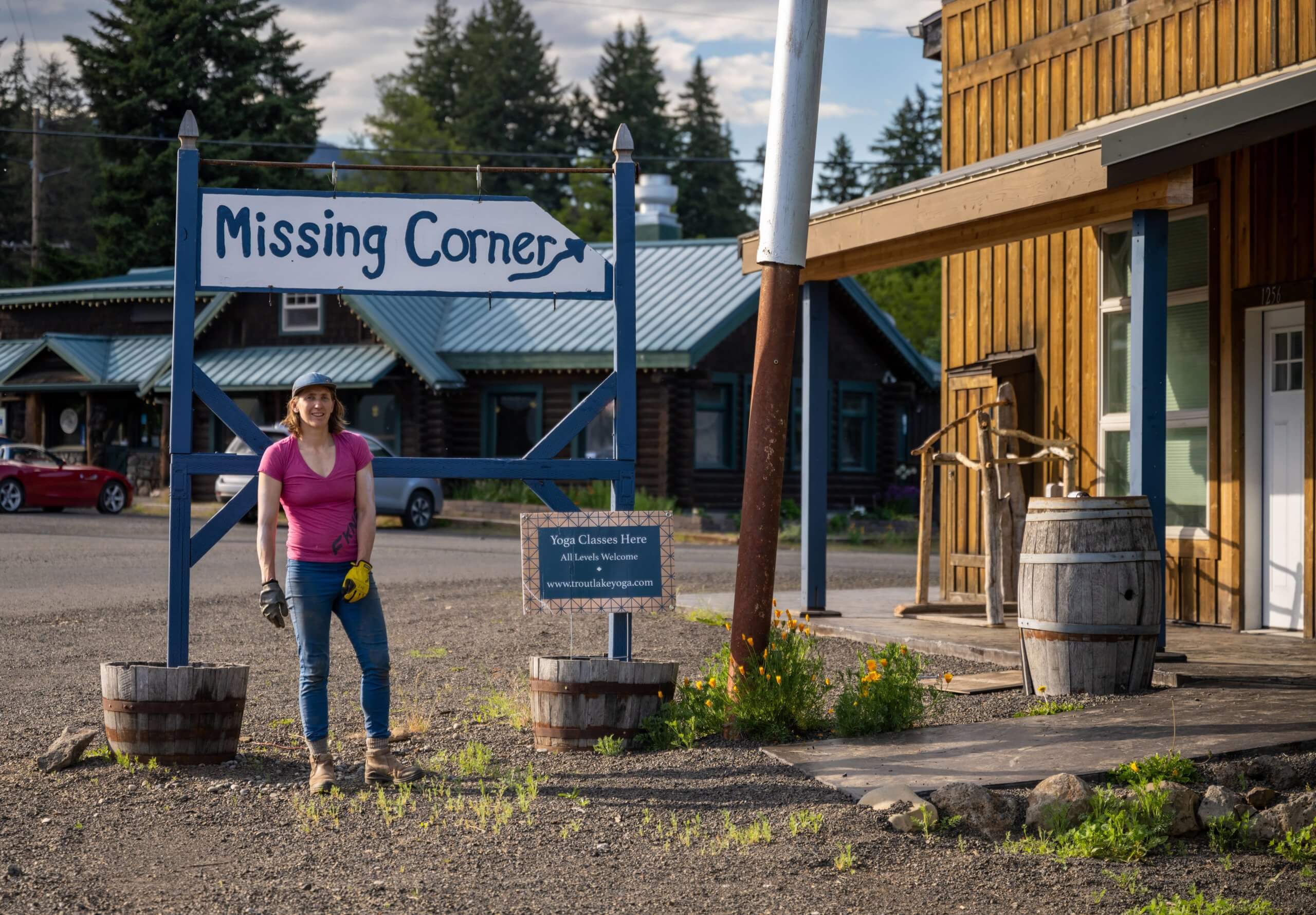
In that year, Anderson endeavored to create the space necessary to listen to her gut and hear her own needs. As she fulfilled more of her own needs, some as simple as keeping the kitchen clean, Anderson found that it was easier to make decisions and set boundaries. She became more present and open to others in her life. Empowered by the ability to make conscious decisions, Anderson asks a simple question to guide herself through life. “My kind of motto is what can I freely give? It could be a smile, right. It could be a big monetary thing, but it’s like thinking about what I mean by freely give. What can I give right now with no expectation of anything in return? That’s the crux of it.”
This mindset has been key in Anderson’s recent project, a local community center called The Missing Corner. Situated on highway 141, the building was acquired after the Andersons received a large sum of money after a family member passed. Initially, Anderson was uncomfortable with the sudden financial shift. “Being able to look at that money as a gift was really helpful for me,” said Anderson. “The best thing to do with a gift is to honor it and the best way I can figure out to honor that gift is to make something beautiful from it. What I feel like is missing a lot is the sense of community in where I live. I think in a lot of our lives these days is this sense of misconnection at a local scale. Most of us don’t even know our neighbors.”
Thus The Missing Corner was born. The space currently hosts a sewing store and Anderson is working with community members to open a local market, establish a food truck spot, and of course, a free boat lending library to provide accessibility to the sport for those who would otherwise be unable to afford it. Built on a pay-what-you-can model, locals are able to pay for their time using the center via a donation box. “In the world in general right now, we need more areas and places that draw people together and foster trust,” said Anderson. “ I think this idea that I’m going to be totally trusting and if someone doesn’t want to pay for their time, it’s probably for a good reason.”
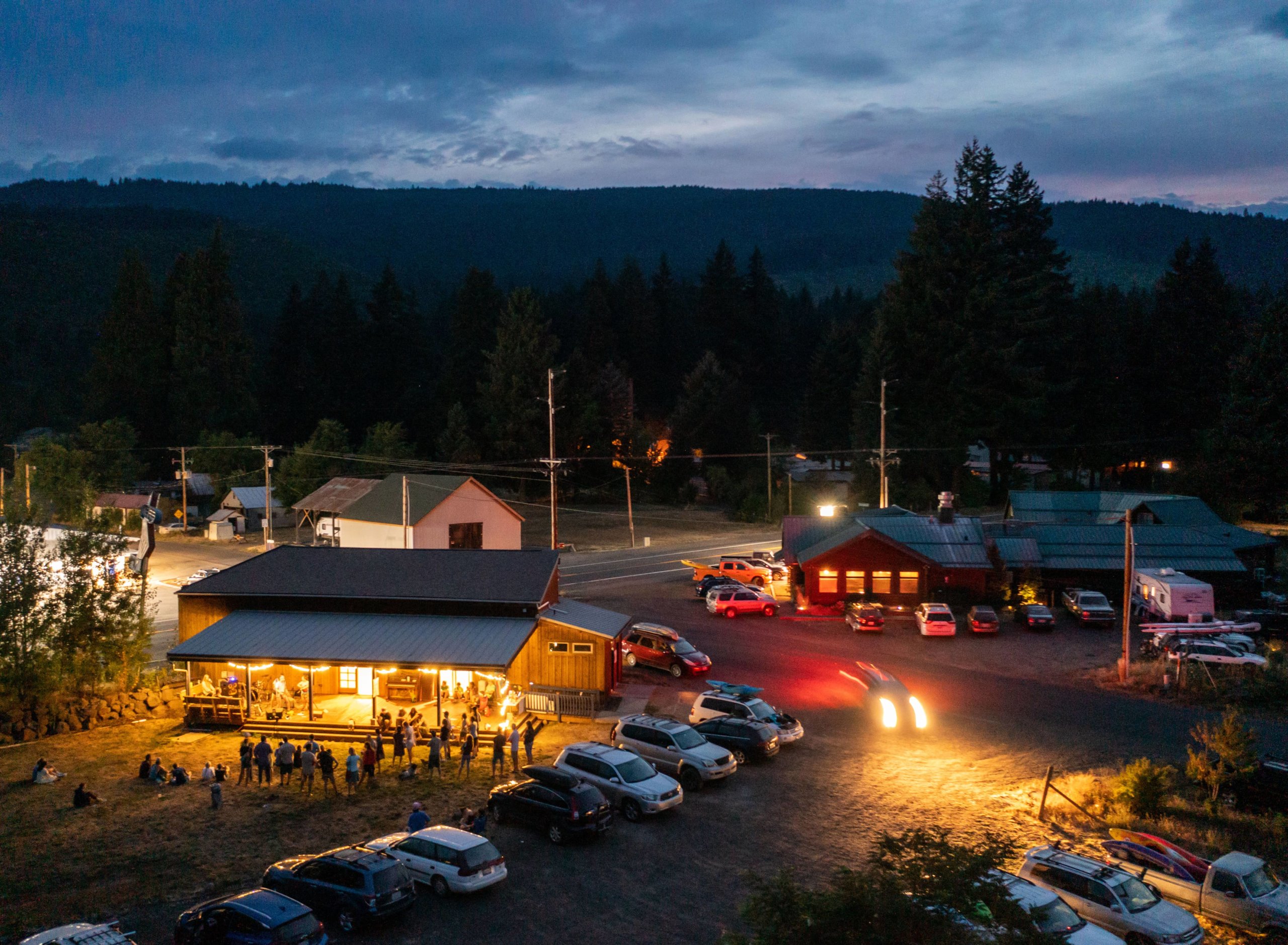
By providing a platform for businesses and individuals to share their goods and talents Anderson hopes to provide connections among her hyper local community. “In a lot of ways, it’s very selfish,” she laughed. “I don’t want to have to drive to town, I want to be able to buy my neighbor’s eggs.”
Though not a simple undertaking, Anderson has designated the community center a “pressure-less project” for herself. Instead of focusing on what she thinks needs to be done, she asks herself what feels right and fun in the moment. By removing the weight of stress from the project, Anderson is able to approach problems with a happier and more relaxed attitude. This attitude in turn has made others excited to get involved and help where they can. Some helping with the physical space, others fixing up the website. “If someone is super excited and they want to do something, I’m like, okay, go for it. I didn’t really want to do that anyway,” explained Anderson. “The collaboration starts to feel natural rather than forced, and it becomes fun.”
Constantly driven by projects and focused on nurturing her family, Anderson has still always found the time to go kayaking. Though she’s now motivated by upcoming athletes in the sport and competition, those factors did not always exist. Reflecting back on the time she’s dedicated to the sport, Anderson explained;
“I like being on the river, for one, but I always surprise people by saying, oh, actually, I’m not, like, passionate about kayaking. I’ve gone so far with it. I like a challenge. For a lot of years, it was just something I did with my husband because he was really passionate. I did it partly because it was a way that we spent time together, and I enjoyed it, but I don’t think I was as fully present for it. You’re always wondering what it means. I’m someone who’s like, I want to have meaning.”
“I was like, what is the meaning of this? Just traveling around, boating. Why am I spending so much time doing this? The last couple of years, I’ve let that go. It doesn’t have to have a bigger meaning. I’ve been able to connect better and I’ve also seen how much it’s benefited my life by doing this activity. You meet so many people and you make so many connections, and without it, I definitely wouldn’t be where I am and doing what I am [today].”
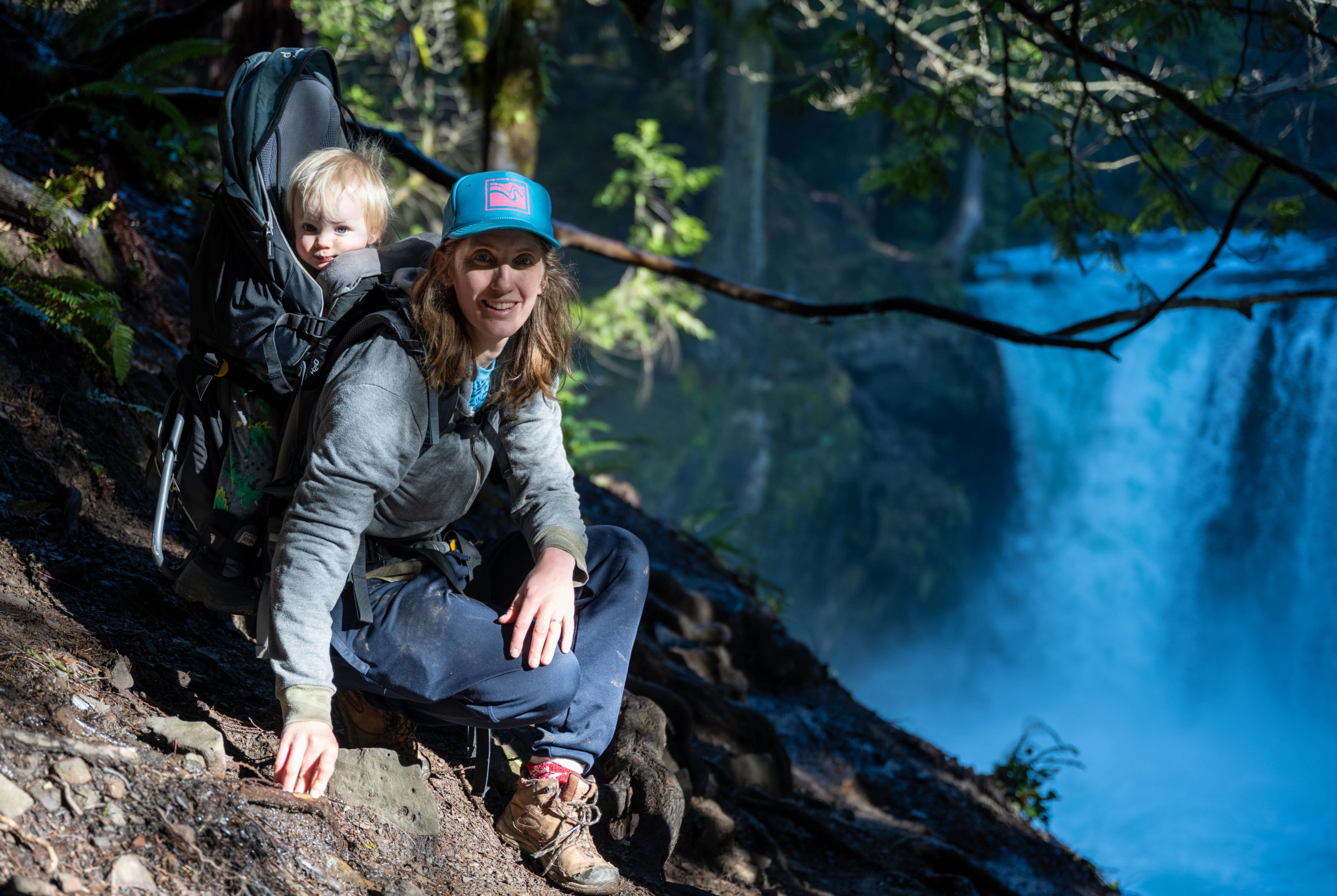
Looking forward, or if you will, downriver, Anderson approaches the future with confidence. Armed with the skills and tools to stay present and hear what her heart wants, she pursues her overarching goal.
“My goal really is to be living a joyful and harmonious life with some fresh adventure mixed in. That’s what I work towards, and that’s what I keep in mind.”
